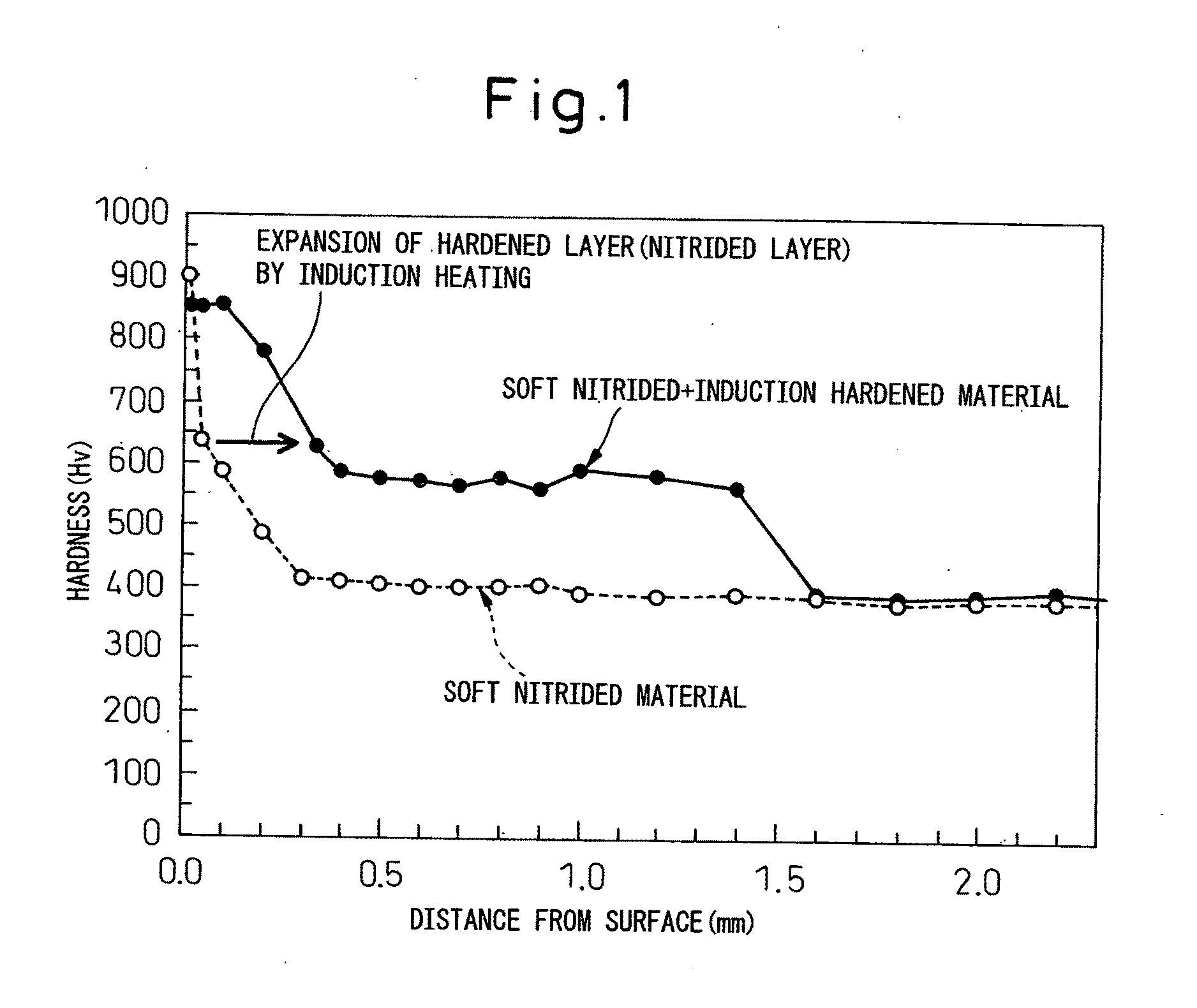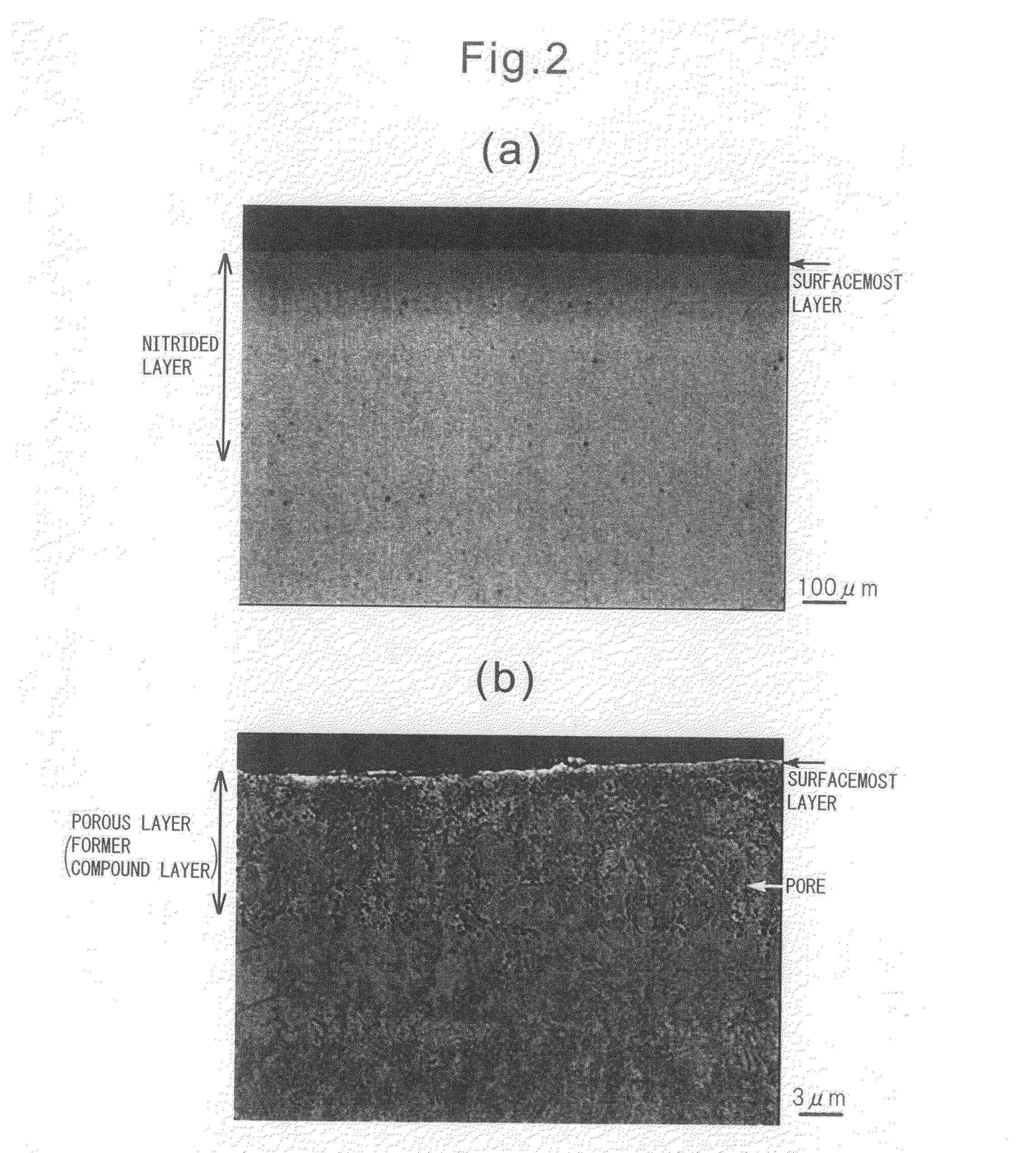Steel for machine structure use for surface hardening and steel part for machine structure use
- Summary
- Abstract
- Description
- Claims
- Application Information
AI Technical Summary
Benefits of technology
Problems solved by technology
Method used
Image
Examples
examples
[0205]Various steel materials with the chemical compositions shown in Table 1 and Table 2 (continuation of Table 1) were forged, then annealed, then machined to fabricate test pieces for use for roller pitching fatigue tests, that is, (a) small roller test pieces having cylindrical parts of diameters of 26 mm and widths of 28 mm and (b) large roller test piece having cylindrical parts of diameters of 130 mm and widths of 18 mm.
[0206]Furthermore, test pieces of a diameter of 26 mm and a length of 100 mm were fabricated for use for hardness tests for investigating the softening resistance by tempering.
TABLE 1Chemical composition (mass %)ExampleClassCSiMnPSCrMoWVAlO1Inv. ex.0.310.702.120.0250.0131.230.790.390.280.0510.0022Inv. ex.0.390.601.920.0280.0091.510.580.310.370.0380.0013Inv. ex.0.430.782.390.0150.0090.680.150.070.400.0830.0014Inv. ex.0.480.531.980.0120.0211.660.120.070.080.0770.0055Inv. ex.0.501.131.810.0140.0180.670.760.320.680.1600.0026Inv. ex.0.531.392.540.0170.0141.410.800....
PUM
| Property | Measurement | Unit |
|---|---|---|
| Temperature | aaaaa | aaaaa |
| Length | aaaaa | aaaaa |
| Length | aaaaa | aaaaa |
Abstract
Description
Claims
Application Information
 Login to View More
Login to View More - R&D
- Intellectual Property
- Life Sciences
- Materials
- Tech Scout
- Unparalleled Data Quality
- Higher Quality Content
- 60% Fewer Hallucinations
Browse by: Latest US Patents, China's latest patents, Technical Efficacy Thesaurus, Application Domain, Technology Topic, Popular Technical Reports.
© 2025 PatSnap. All rights reserved.Legal|Privacy policy|Modern Slavery Act Transparency Statement|Sitemap|About US| Contact US: help@patsnap.com



